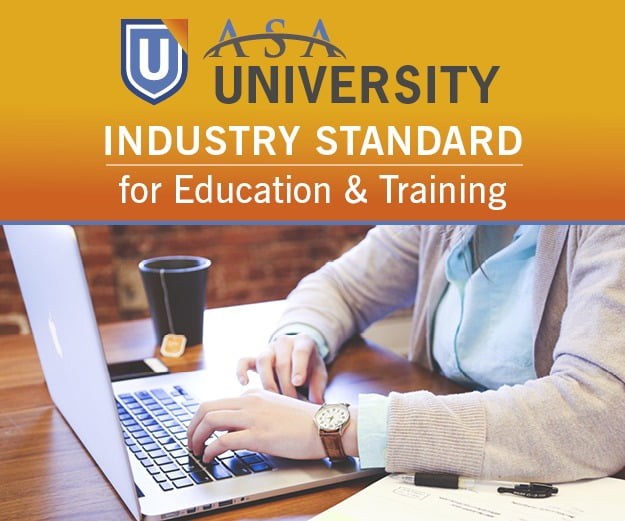How volunteers help make the ASA educational sausage
You may have seen the ASA educational motto “By the Industry, For the Industry,” but what exactly does that mean?
The ASA University team helps create, innovate and update our educational offerings according to educational best practices; that’s our team’s expertise. But the true experts on the industry are our members — who live and breathe, walk and talk, and experience their industry in everyday life. We rely on our interactions with members to help us connect the dots so we can fulfill the needs of our members. But how is the ASA education sausage actually made? Let’s take a walk through the factory floor.
Conversation is key
We have a lot of conversations with our members. ASA Education Foundation team members regularly reach out to check in with ASA members to see if their needs are met, training or otherwise. On the flipside, ASA members frequently contact their friendly ASA University Advisors to learn best practices, seek help for challenging training problems or simply ask questions. Through discussion and feedback, not only do we offer the support members need, but we also learn how our members struggle or thrive. This communication helps us identify trends in industry issues, which, in turn, assists us in creating solutions on an individual or member-wide level.
So, what happens when we identify a solution or opportunity that could benefit all of our members? We ask industry experts for their help to make it a reality. And who are those industry experts? YOU.
Putting members to work
ASA hosts many special interest groups of industry professionals who meet regularly to discuss industry issues and solutions for their specific pain points. Sometimes, those solutions require training and education. If ASA doesn’t already have a solution for the challenge, we’ll work with a subgroup to gather information, create proposals and offer our members an educational resolution to the problem or issue at hand. Safety, human resources and leadership groups are just a few of the work groups that have or are actively working with the Education Foundation team to resolve industry issues through training.
Borrowed time
Sometimes, our volunteer groups don’t grow so organically. ASA may use member suggestions to determine what challenges we should work to resolve, and sometimes we follow a schedule to review and revamp already created content.
The Education Foundation creates its own content and courses using the expertise of industry members. We call these folks “SMEs,” or subject matter experts. These individuals help guide our offerings and will help write, create, review, adjust and update courses offered through ASA University. ASA University regularly reviews and validates every one of our homegrown courses on a rotating schedule.
Our in-house instructional designer assists and guides volunteers through every step of the review process, extracting key industry knowledge and industry-specific expertise along the way. And the collaboration doesn’t stop there. Peer reviewers sit in on each course update, providing their own experience and expertise to add nuance to the discussion. A level of peer review ensures that our content is on target and applicable across a wide spectrum of members. This symbiotic relationship is the foundation to every ASA course that is created, from soup to nuts.
Staying on task
Task groups are also gathered on a regular basis to assist our team and maintain a review schedule for ASAU training tracks for specific job roles and the Master of Distribution Management, our flagship leadership program. This is a best practice rule that ASA abides by. Much like colleges and universities go through reviews of curriculum to ensure they provide the best education for students, ASA follows a similar process.
These groups work directly with ASA to do an analysis of each program or track to help us create the most robust training possible. The group and ASA collaborate and suggest adding or eliminating curriculum based on current needs and trends. The volunteers are experts in their specific areas and know what they and their fellow members need. These groups not only assist in reviewing and updating programs and training tracks, but also job descriptions, assessments and suggestions for the elimination or creation of training tracks.
ASA takes this information, interlaces it with education best practices, and provides a proposal to the group. Upon the group’s approval, the updates are executed, and the results are the most up-to-date and relevant training in the industry.
Education isn’t the only area that ASA needs volunteers. Many members volunteer their time to help ASA develop our mission, goals and strategies through multiple boards, councils and committees. If you are interested in getting involved, you can read more and apply HERE.

